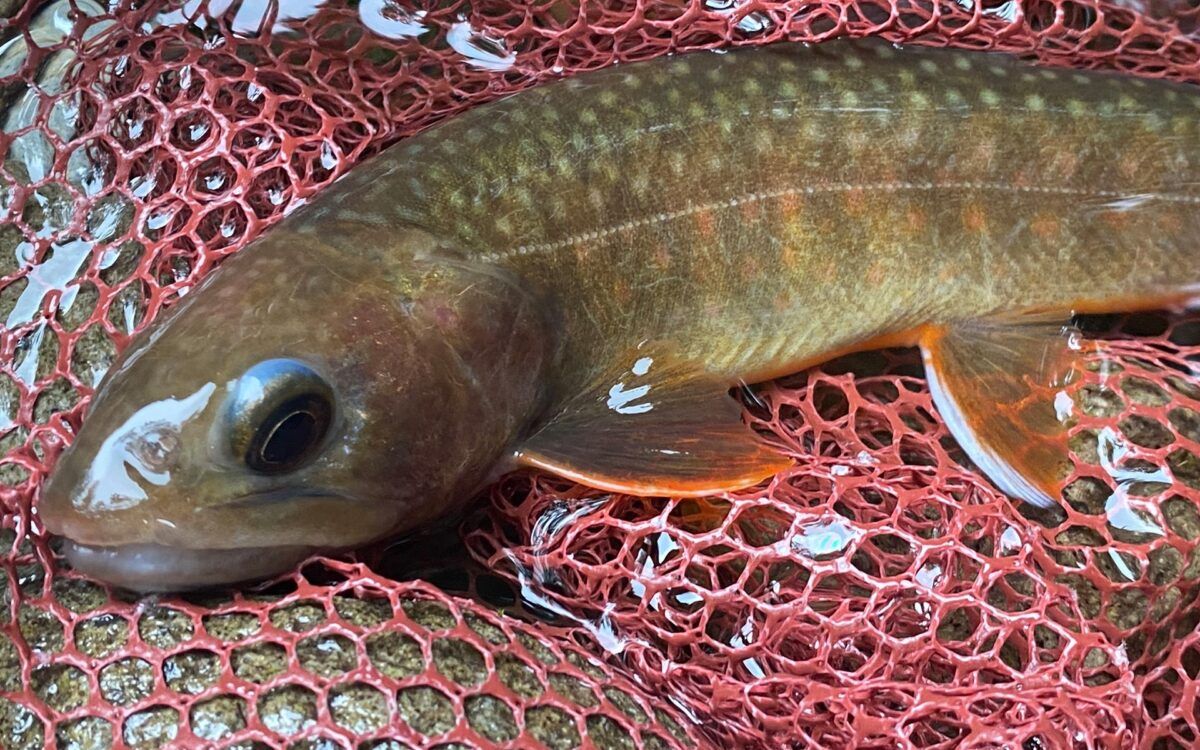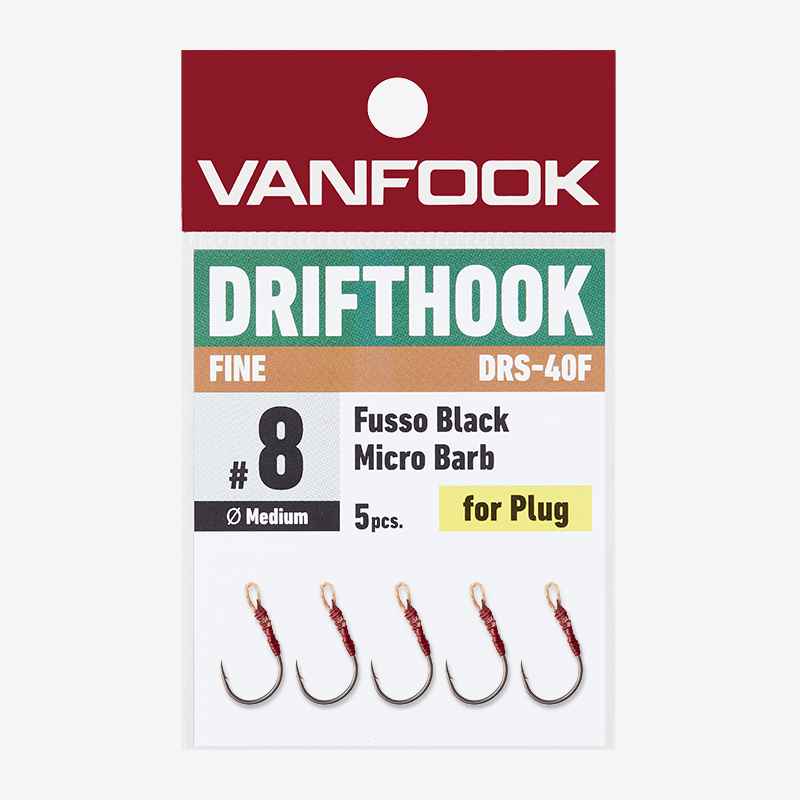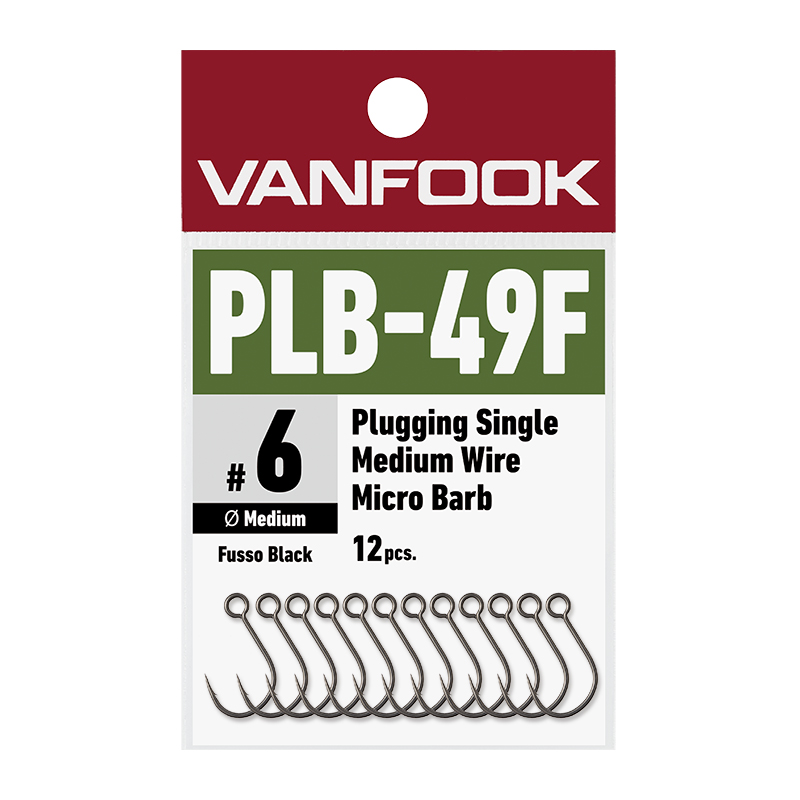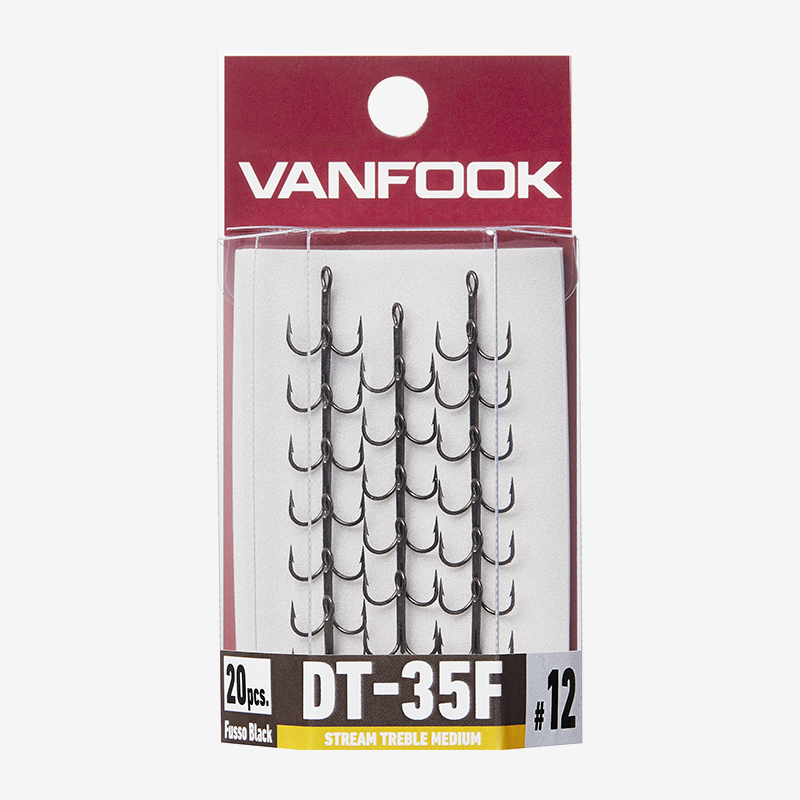The summer of 2023 in Japan has been extremely hot to the point of being unprecedented.
It has been so hot that we have been hesitant to go fishing during the daytime, but it is precisely because of this that native anglers want to go to cool and beautiful rivers where beautiful fish can be found.
In this article, we would like to summarize the results of test fishing, especially for Iwana (Char), a Japnanese landlocked salmon.
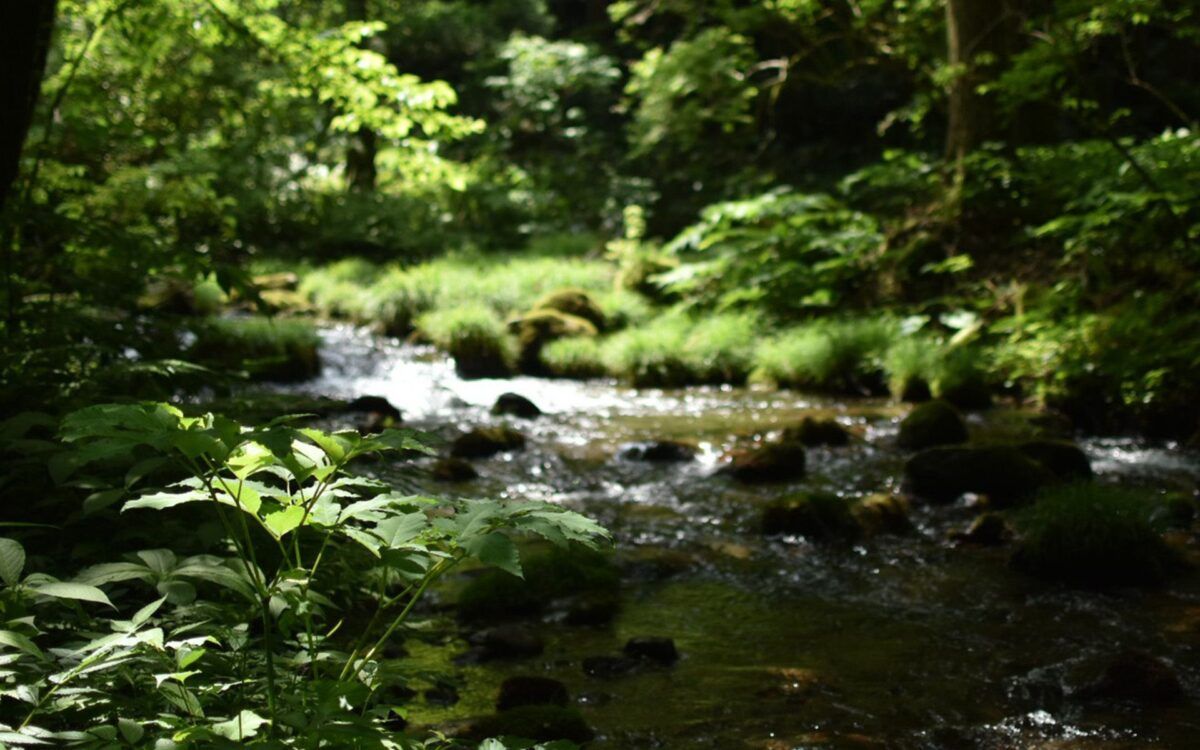
While the year 2023 was hot and sunny, many rivers tended to be drought prone due to a lack of consistent rainfall.
Because of these river conditions and the timing of fishing trips in search of cooler conditions, this season I fished more in headwaters where Iwana Char inhabit rather than in areas inhabited by Yamame and Amago (other species of landlocked salmon), and this allowed me to encounter many Iwana that are endemic to the area.
There are four main species of Iwana in Honshu, the main island of Japan. The four species are the Ezo-Iwana, which lives in the Tohoku region; the Nikko-Iwana, which is found mainly in the Kanto region and throughout Japan; the Yamato-Iwana, which lives in parts of the Chubu region; and the Gogi, which lives in the San-in region.
This summer I targeted three species: Nikko Iwana, the Yamato Iwana, and the Gogi.
Even within the same species, the pattern and coloration of Iwana can be completely different just by changing one adjacent stream. I feel that the ability to catch unique fish in each region and river is a major attraction of Iwana.
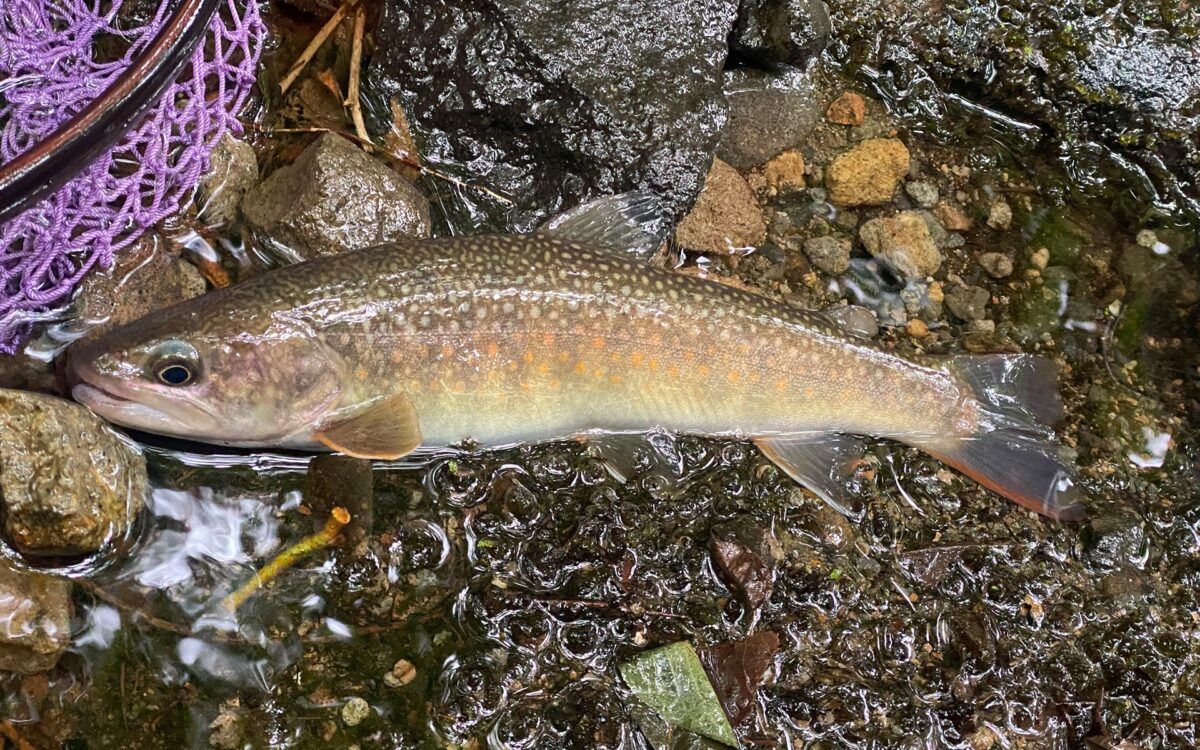
Nikko Iwana in the Kamanashi River system, Yamanashi Prefecture
Another attraction of Iwana is that they aggressively chase the lure.
Yamame and Amago are very picky fish, chasing and not chasing the lure at all depending on the timing, or chasing hard but not biting if the fish fails to bite. That’s part of their attractiveness, though…
On the other hand, Iwana is so cute, angler-friendly fish that, even if she run away when she sees you on the way chasing towards your front, but she will bite hard at one shot when you cast to where she ran away.
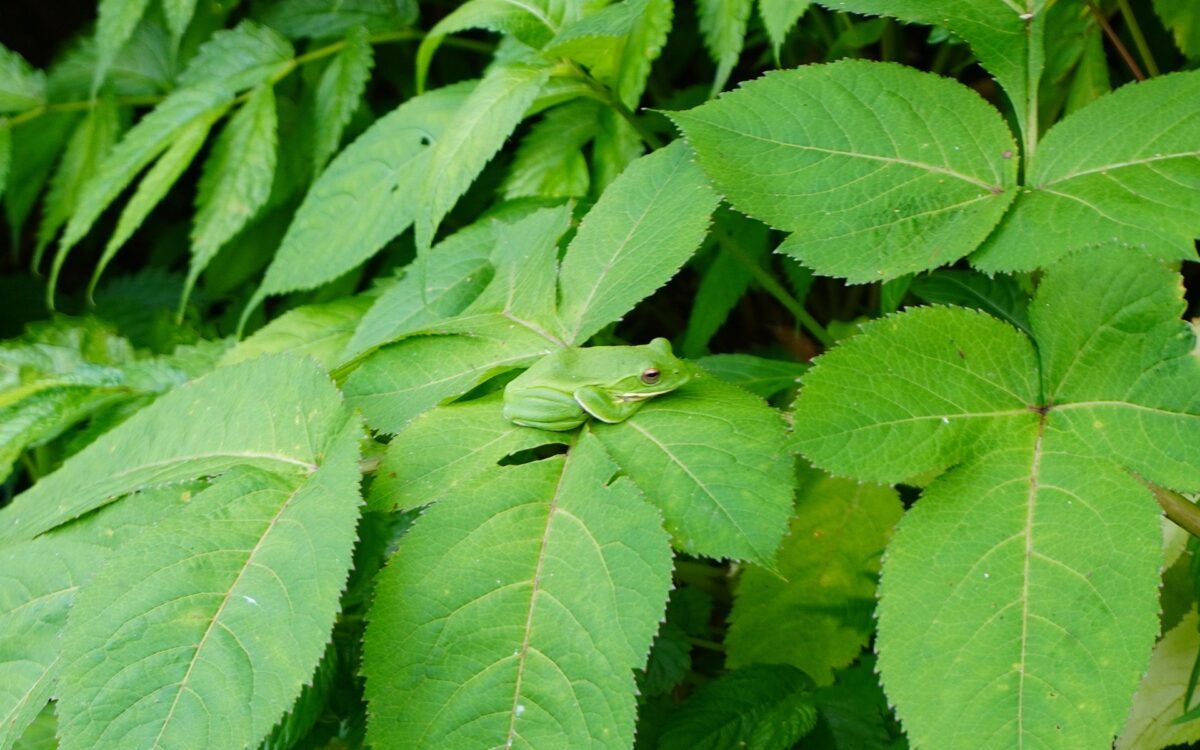
“Forest Green Tree Frog” encountered on the way. It is considered as designated natural animal in some region.
In order to catch beautiful Iwana, we must go deep into the mountains. It has both advantages and disadvantages.
The big advantage is that you can come into contact with nature that you cannot encounter in everyday life. Depending on the season, you can see rare and precious creatures, plants and flowers, and if the area is accessible, you can eat delicious wild vegetables and wasabi (horseradish). It is a moment when your life becomes richer through fishing.
The disadvantage is the risk of encountering dangerous animals or being injured on bad trails, which can be physically threatening.
The further you go into the headwaters, the more likely you are to encounter a bear, and the greater the risk of slipping and falling when entering or exiting a stream valley. The risk of falling or being injured by vegetation, etc., makes it essential to choose the right gear and prepare carefully.
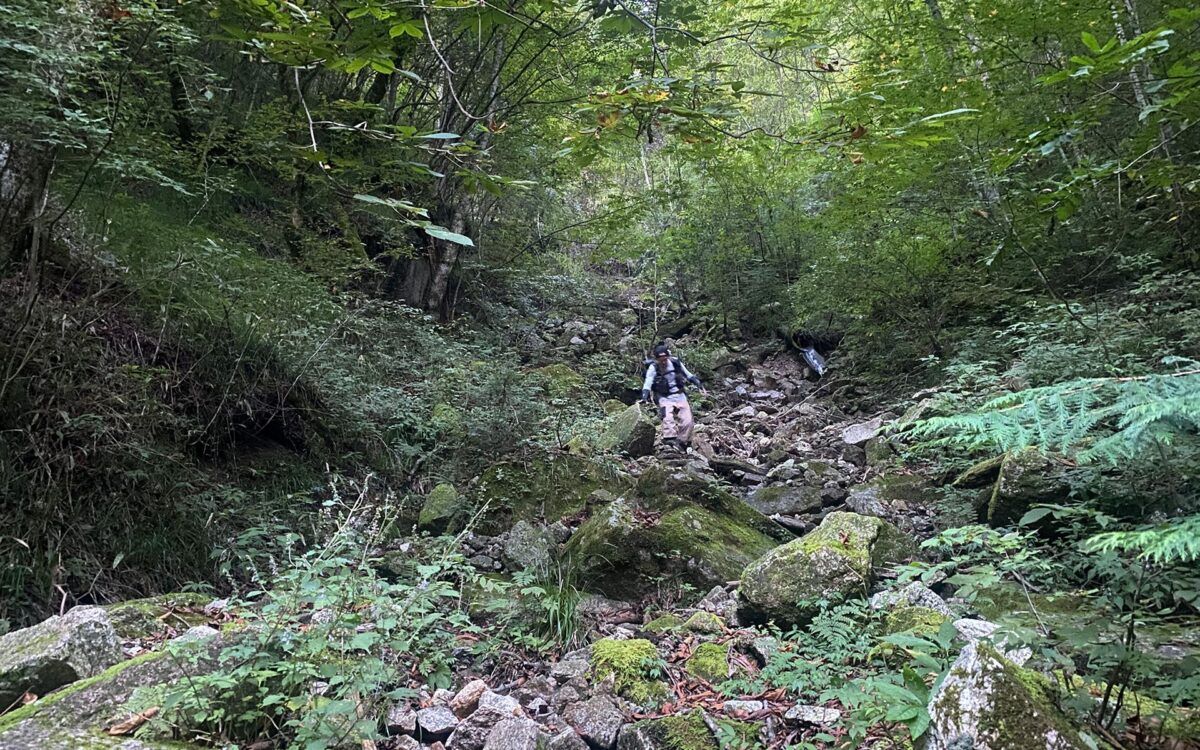
Descending a steep valley trail with the danger of falling rocks. It is important to call out to those ahead of you to warn them of the danger of falling rocks.
It is especially difficult to catch a beautiful fish that is close to the original species unless you go deep into the headwaters, which is the Yamato Iwana.
The Yamato Iwana has only a vermilion dot pattern. The white dots and the absence of a pattern on the back give the fish a slightly flat appearance.
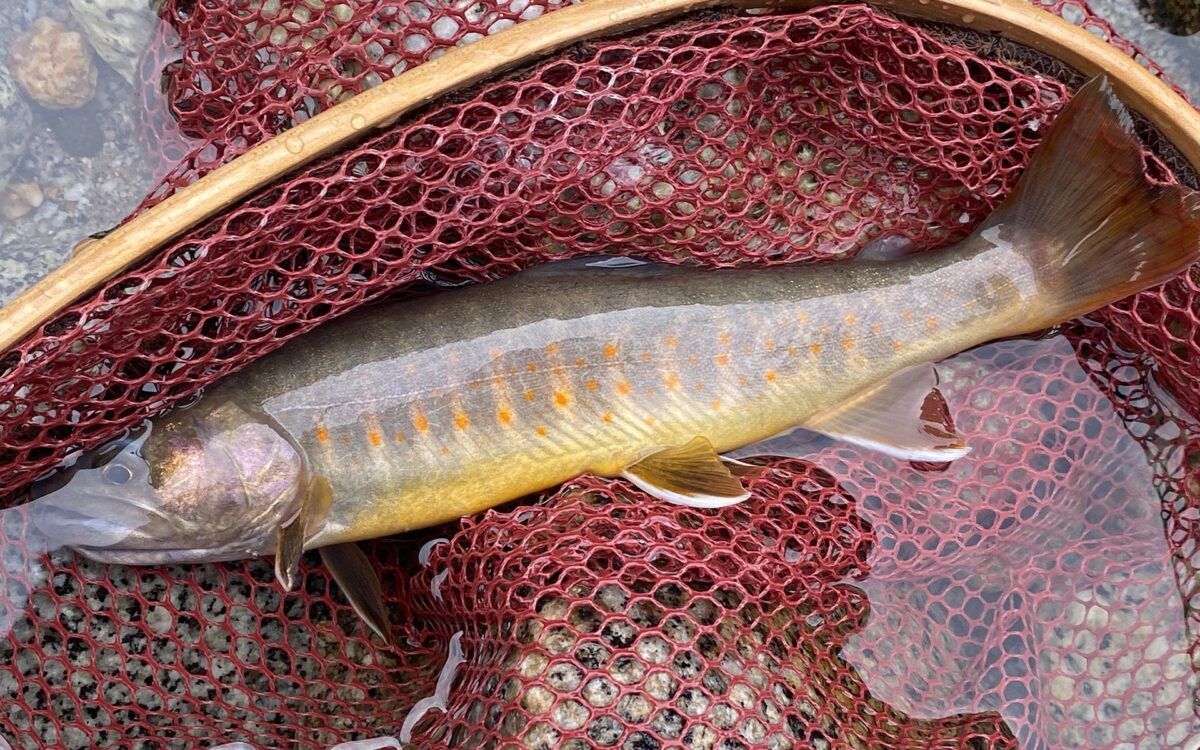
Yamato Iwana in the Kiso River system
In the Kiso River system, where I frequently visit, there are active efforts to protect the Yamato Iwana. Although the stocked releasing of Yamato Iwana done often, the Yamato Iwana are increasingly being mixed with Nikko Iwana, and it is difficult to see fish that are close to the original species unless you go to the headwaters of the river.
This year, I went to target Yamato Iwana several times, mainly in the Kiso River system, but in easy areas, the mixed-breed species were conspicuous and the Nikko Iwana were more rather.
If you want to target beautiful Yamato Iwana without white spots, it would be better to go back to the headwaters and target the branch streams while checking the conditions such as water volume.
After a long mountain-climbing trip and a steep river run, the Yamato Iwana I encountered were so beautiful and the joy was much greater.
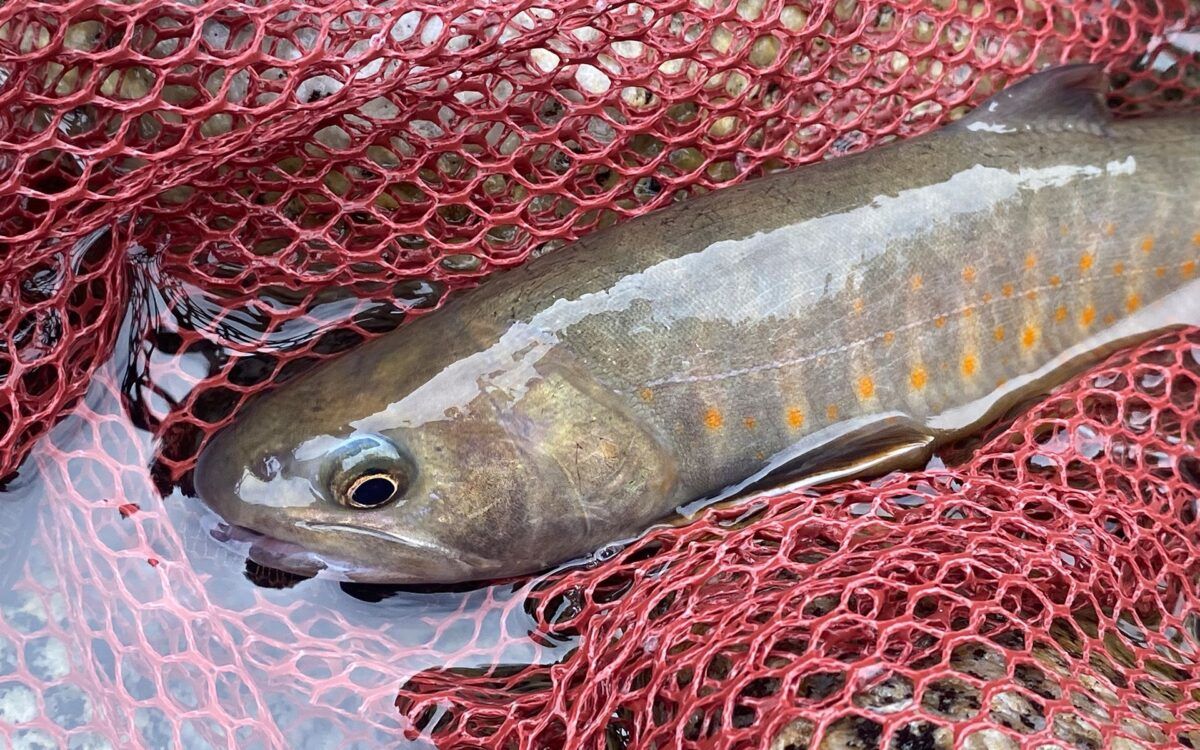
Yamato Iwana with a sharp face due to the strong current area
Like the Yamato Iwana, which is rooted in the central region, the Gogi is found only in the San-in region.
It is similar to the Nikko Iwana, but its most distinctive feature is the pattern on its back that extends to the head and has patterns of like holes of insect-eaten.
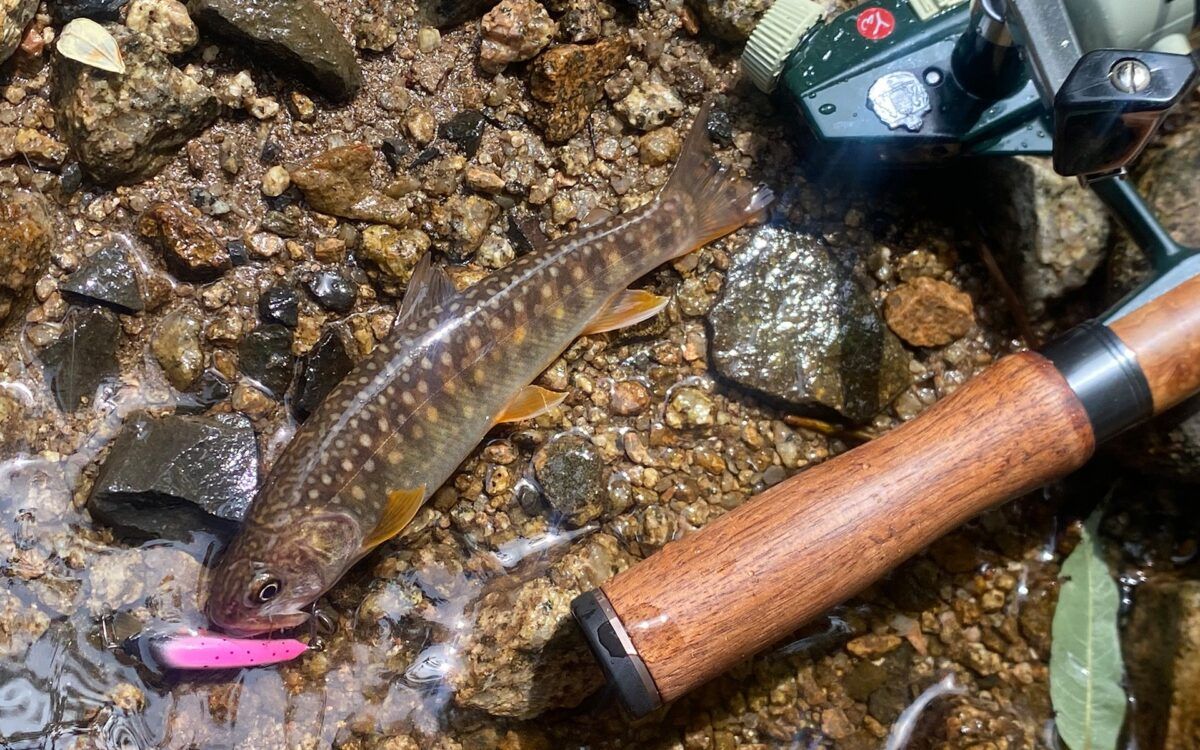
Gogi in Tottori Prefecture
Like the Yamato Iwana, it has become interbred with the Nikko Iwana, and it is difficult to catch a fish that can be clearly identified as a Gogi.
In order to catch Iwana with the clear spot (insect-bitten) pattern on the head, it is necessary to explore deep headwaters and streams separated by weirs, as is the case with the Nikko Iwana.
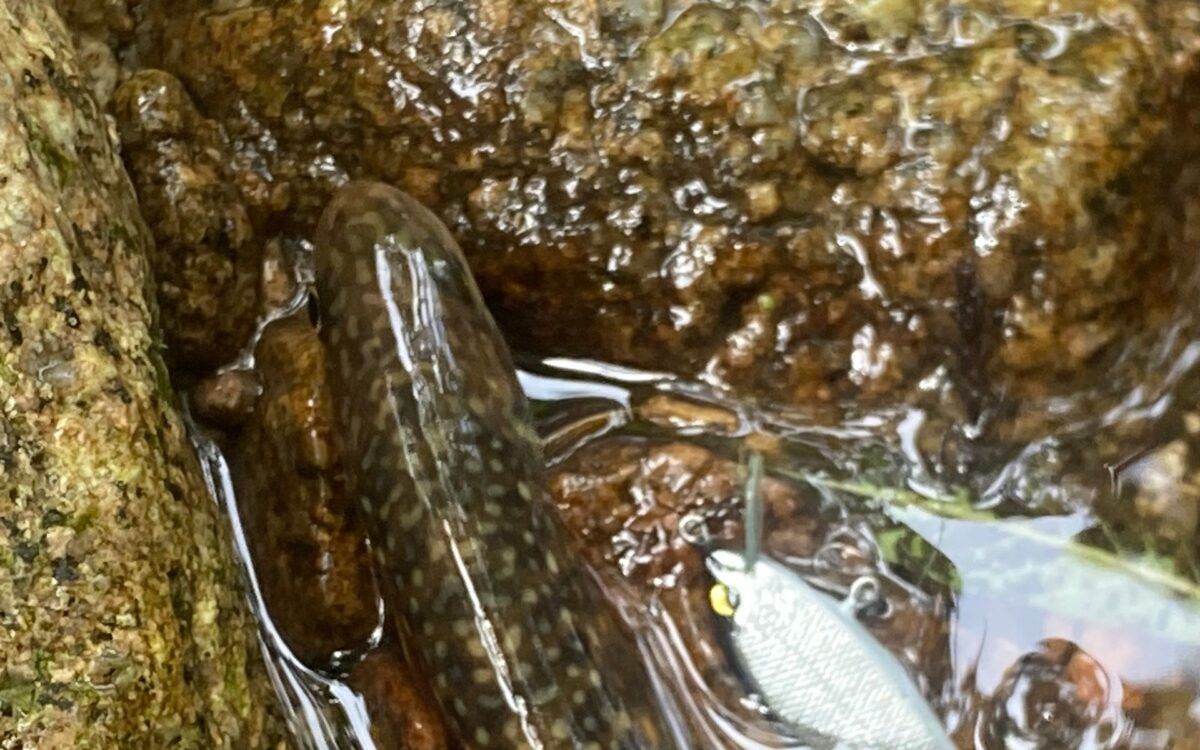
In Tottori and Shimane, Iwana with insect-bitten-patterns on the head are common.
There are also local species in Nikko Iwana that are classified by their patterns and coloration.
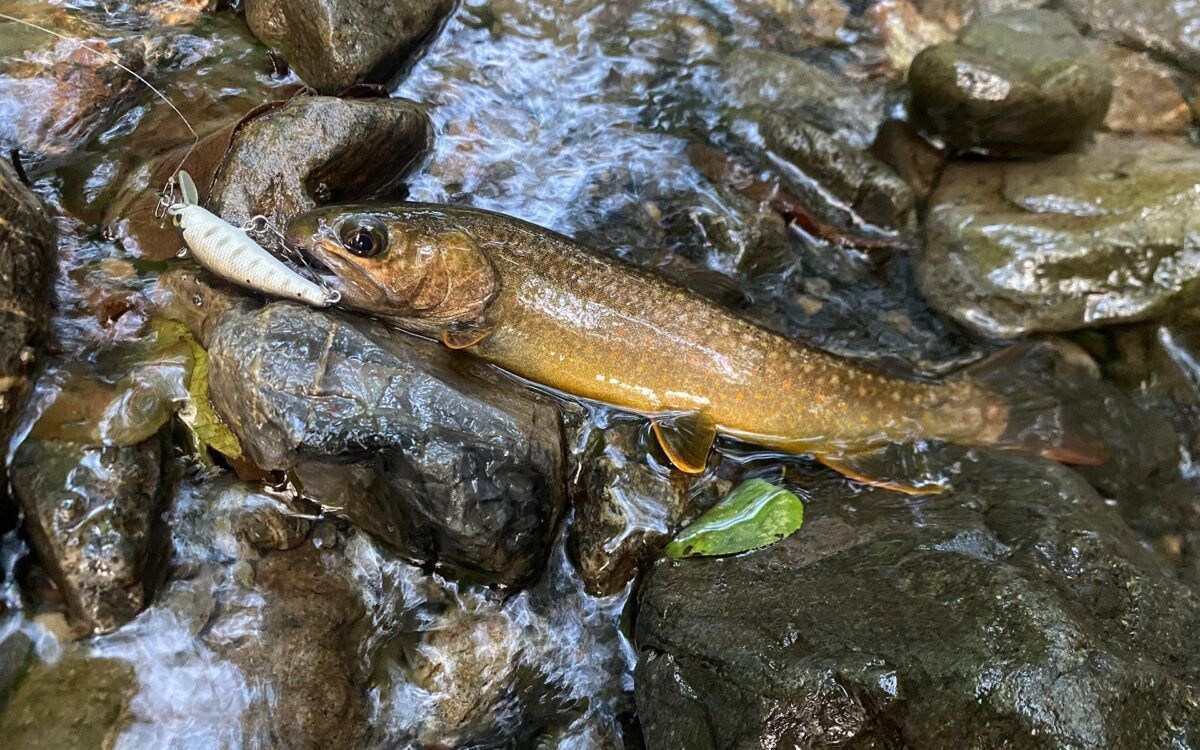
Iwana with strong golden coloration. The orange speckles were also beautiful, but the picture doesn’t do it justice…
The golden Iwana with many vermilion dots caught deep in the Okuchichibu area in Saitama are called “Chichibu Iwana.”
The number of native Iwana has been decreasing, and they can only be caught in the headwaters of major streams.
This fish was caught by chance at the end of a stream that is not so far from the headwaters. It is difficult to say for sure that it is a Chichibu Iwana, but it is probably an individual with a strong native bloodline.
If you go deep enough into the river to stay overnight, you can see larger and more beautiful fish. It may be a tough journey to the fishing grounds, but it is a fish I would like to try in earnest.
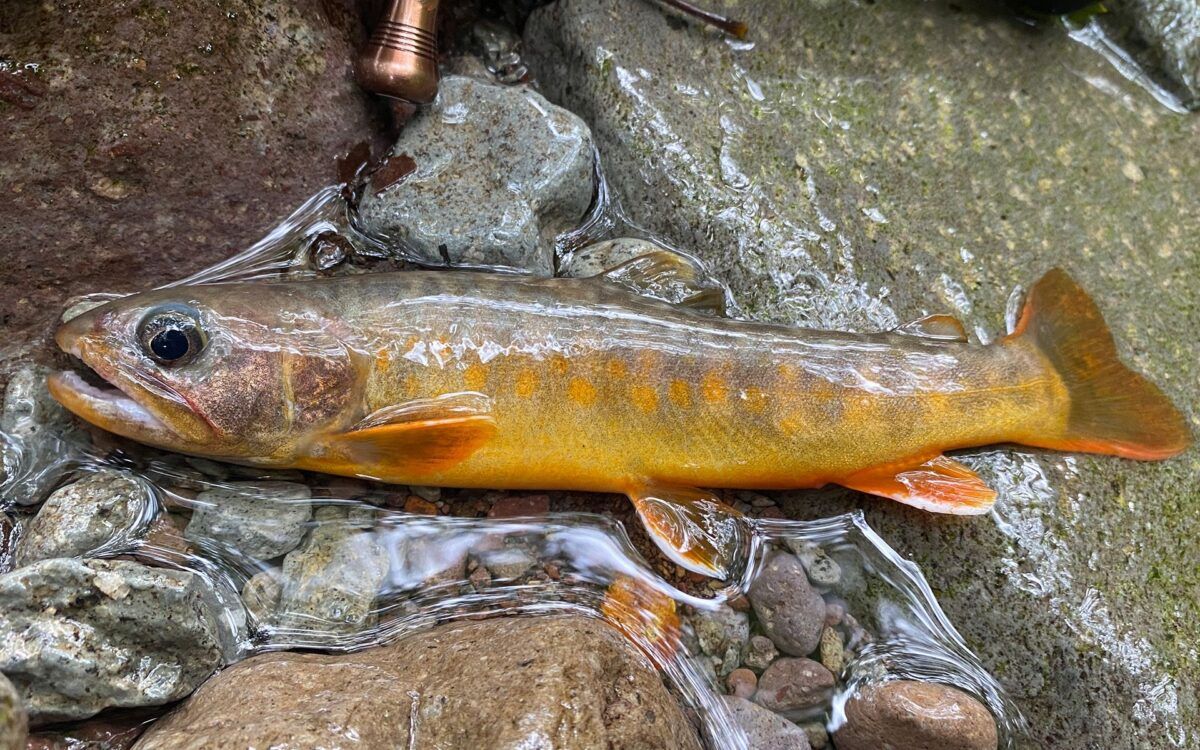
The characteristic of Daisen Iwana is its unparalleled red-orange coloration
The “Daisen Iwana”, which inhabits rivers originating from Daisen, an independent mountain in Tottori Prefecture, has amazingly bright body.
The colors of vermilion, orange, yellow, etc. are so distinct that they appear red the moment they are flipped.
In particular, the body ends such as the fins are almost completely colored a warm color except for the edges, making it a beautiful fish that cannot be seen anywhere else.
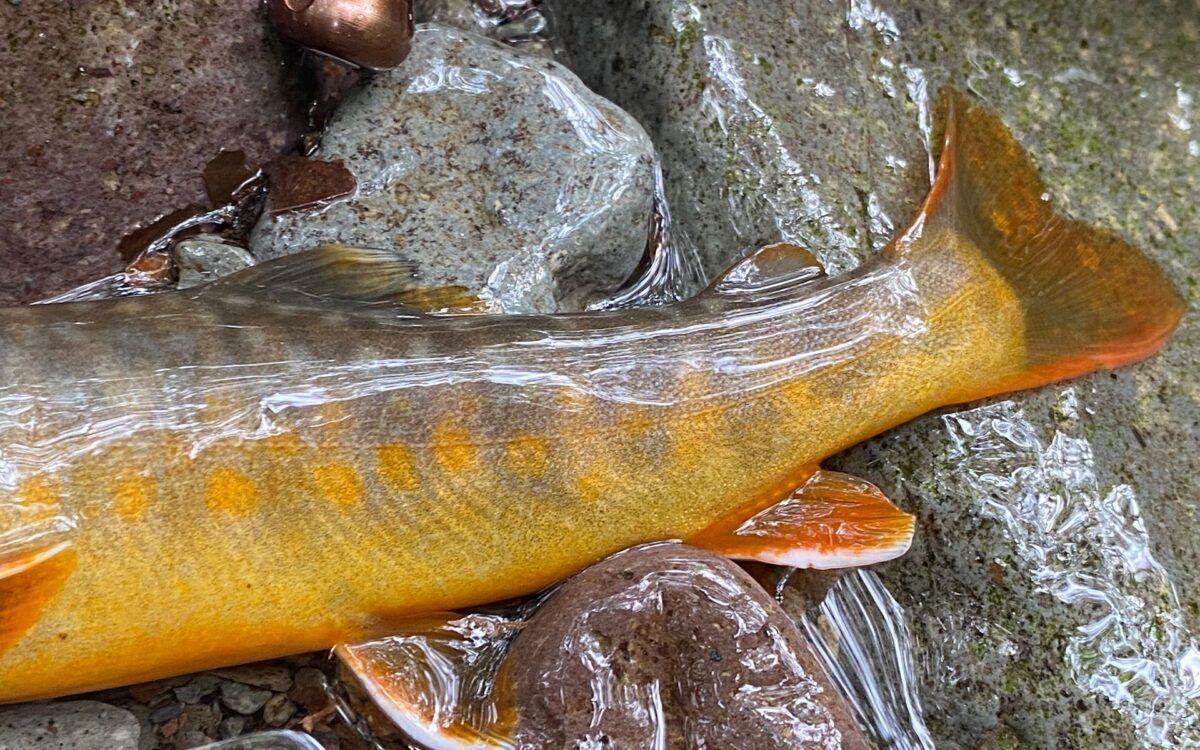 I have caught Iwana in many places, but never such a brightful Iwana.
I have caught Iwana in many places, but never such a brightful Iwana.
Not like Chichibu Iwana as the deeper you go, the more fish you will catch, but it is a characteristic of trout in Tottori that as you fish your way up, you will suddenly find fish like this one there. In Tottori Prefecture, the fish are generally plentiful, so you fish your way up the stream while enjoying yourself will reward you with a beautiful Daisen Iwana.
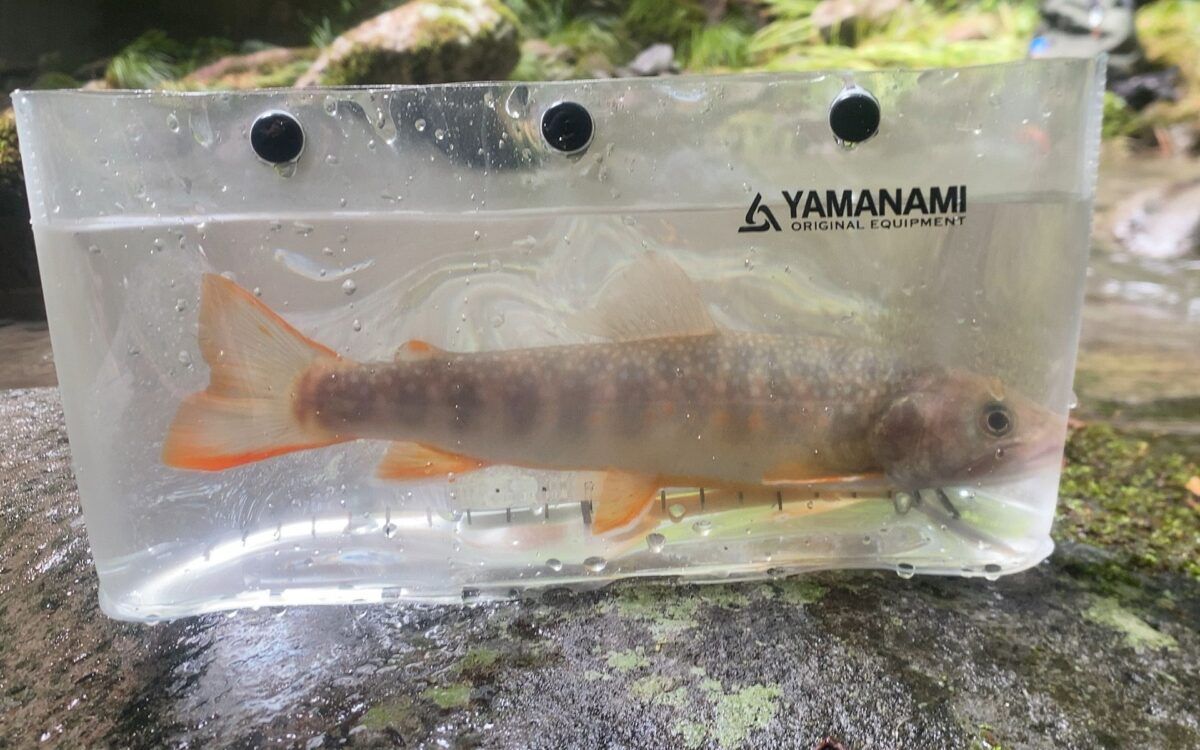
Iwana caught in the same area.
Iwana caught in the same area tend to be not strongly warm-colored, but have a large fringed area on their fins.
From my experience, I feel that fish caught in open areas are light in body color but only have orange fins.
Hooks for stream
As a staff member of a fishing hook brand, I would like to write about hook selection here.
As mentioned above, Iwana is the species that often chases lures aggressive.
Therefore, as long as you get the approach right, you can have fun with the lure and tackle you want to fish with.
I have always been a single-hook angler, but this year I had several test fishing trips, and I often used different hooks: single hook for around clumps of grass areas where trouble increases, and treble hook for open areas.
In the headwaters, there are many aggressive bites of small Iwana. So, treble hooks often get pierced around the fish’s eyes, which often results in significant damage to the fish.
The DT-25F treble hook, which is currently under development, offers a good balance between hooking, resistance to disentanglement, and ease of removing the hook, and is designed to minimize damage to the fish.
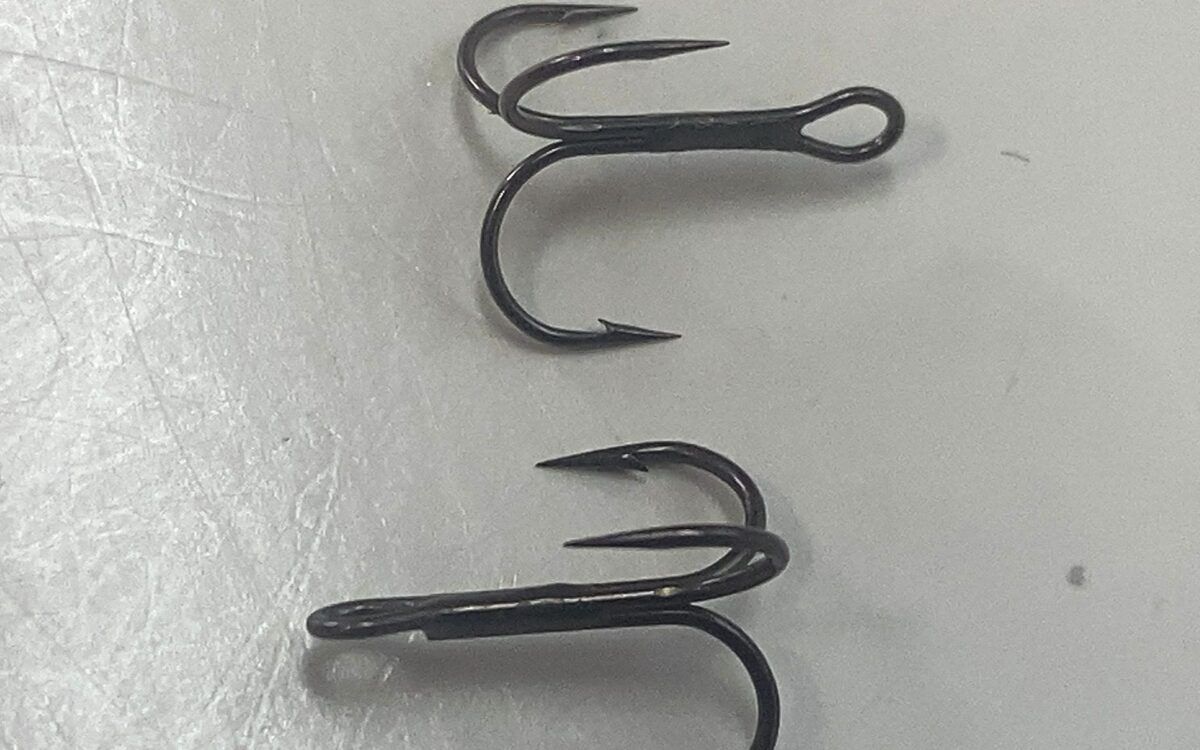
Top: DT-25 under development, Bottom: DT-35F
The same size but with not only a narrower shaft but also adjusted barb positions, etc.
This season, the thin-shaft treble DT-25F worked well in the extreme heat as well as in the drought with many short bites that could not be chased out of the water.
It should be noted that even small fish were not excessively damaging and rarely caused serious damage to the eyes or gills.
In these days of prolonged heat wave and unpredictable downpours, fishing is often difficult, but we will continue to create products that are friendly to both people and fish from the field so that many anglers can enjoy fishing for a long time to come.
